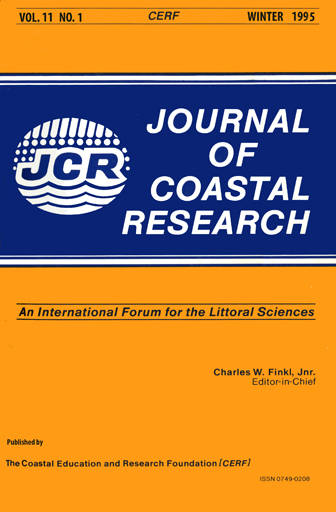Processes behind the Longshore Variation of the Sediment Grain Size in the Ebro Delta Coast
Keywords:
Grain size distribution, longshore transport, wave power, erosion/accretionAbstract
The longshore variation of the sediment grain size in the Ebro Delta coast was investigated to estimate which processes control its distribution. Thirty-two control points along the coast were used in which a representative sample was obtained by averaging four samples taken in the inner part of the surf zone during eight field campaigns (32 samples per control point). The obtained distribution was related to the longshore variation of a set of parameters characterising beach processes: shoreline evolution trends, net longshore sediment transport rates and nearshore wave power. The beachface presents a narrow range of sediment sizes due to the existence of a single external source of sediment (Ebro River) supplying a low amount of homogeneous sand. These supplies are mainly restricted to the northern hemidelta, where the sediment is finer than in the southern part. The sediment grain size distribution along the Ebro Delta coast shows a non-monotonic longshore sorting process of sediment related to the alongshore variations of the main driving agents (longshore transport and wave power). In general, coarser sediments are present in erosive zones, with high wave power and positive longshore transport gradients. Finer sediments are characteristic of depositional areas, with lower power and negative longshore transport gradients. However, the littoral dynamics along the Ebro Delta coast cannot be fully inferred from sediment grain size distribution because several parameters control the sediment distribution. In this way, some coastal stretches showing similar grain sizes under different patterns of longshore transport rates and incident wave power were identified.


